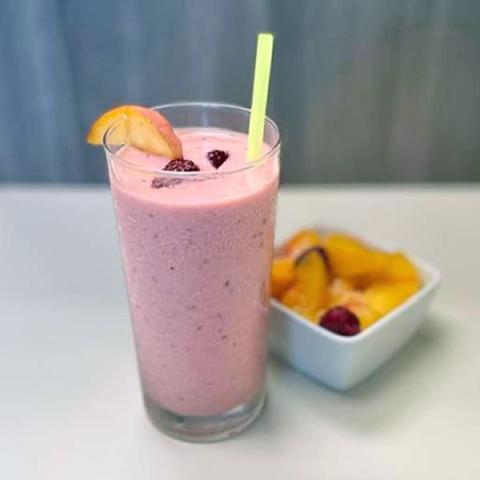
In the time needed to get out your food processor, assemble it, take it apart again and wash it, you can often slice, mince or chop food faster with a chef's knife. A chef's knife can help you make fast work of serving healthy fresh fruits and vegetables.
A chef's knife (also called a French knife) has a broad, tapered shape and a fine sharp edge. Its blade ranges in length from 6 to 12 inches and measures at least 1-1/2 inches at the widest point. It is designed so it rocks on a cutting board as it cuts food.
How to Hold a Chef's Knife
Note the manner in which the NON-KNIFE and KNIFE hand are held in the photo below.

For the NON-KNIFE hand:
- The fingers are curled under to protect the fingertips.
- The thumb and little finger behind the other fingers.
- The side of the blade (but not the edge) rests against the middle knuckles of your NON-KNIFE hand. This helps you keep the knife from coming down on your fingers. It also helps you measure the size of the cuts, moving your hand backward on the food after each cut in preparation for the next cut.
- Cuts are made downward with a rocking motion from the tip to the end of the blade. The knife is not sawed back and forth through foods.
For the KNIFE hand:
- View how the thumb and first finger grip the blade just beyond the handle. This helps make the knife an extension of your arm and gives you better control and precision in cutting.
- When finely chopping or mincing some foods, such as small bunches of herbs or garlic, the handle may be held in one hand while the other hand rests on top of the blade.
- The tip of the blade is kept in contact with the cutting board. The blade is rocked up and down until the food is chopped to the desired size.
- To prevent vegetables and fruits from slipping on your cutting board, cut them in half before slicing or chopping further. This helps anchor them firmly on your cutting board and helps protect against cutting yourself.
When finely chopping or mincing some foods, such as small bunches of herbs or garlic, the handle may be held in one hand while the other hand rests on top of the blade - shown in the photo at the top of the page.
Caring for a Chef's Knife
To help prolong the life of your chef's knife:
- Many knife companies recommend you avoid washing your knife in the dishwasher. You may damage the blade. Also, wooden handles may not hold up well when washed in a dishwasher. Always dry the knife before storage.
- Follow the manufacturer's directions for sharpening your knife. A sharp knife not only cuts better but is safer than a dull knife. There is a tendency to use too much force with a dull knife, lose control and cut yourself.
- Avoid cutting on hard surfaces that dull the edge of your knife, such as glass cutting boards. Softer cutting boards, such as polyethylene plastic cutting boards, are much easier on knives.
- Store your knives in a knife block or other storage system that keeps the blades separate. Do not throw them together in a drawer where they can bump against each other and possibly damage or dull the blades.
Sources:
Know your knives, University of Illinois Extension
Selecting and caring for kitchen knives, University of Kentucky Extension
This newsletter has been peer-reviewed. It was originally written by Alice Henneman and updated in 2022.
Tags:
Feedback Form
Feedback Form
If you do not see the article, please scroll up the page.







